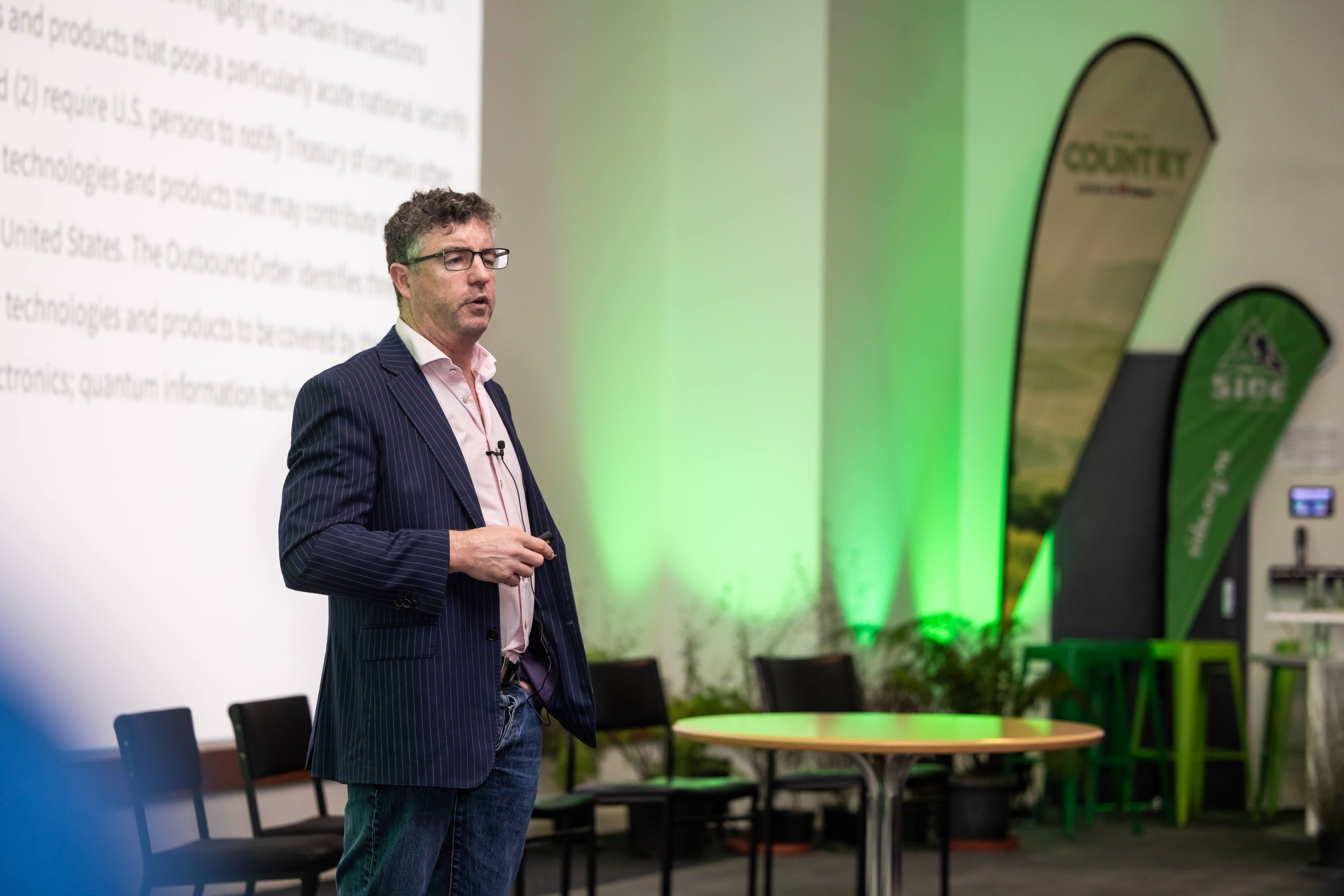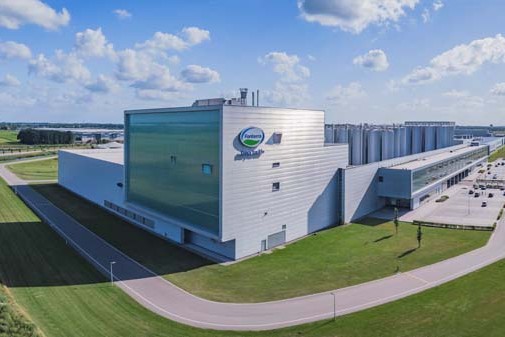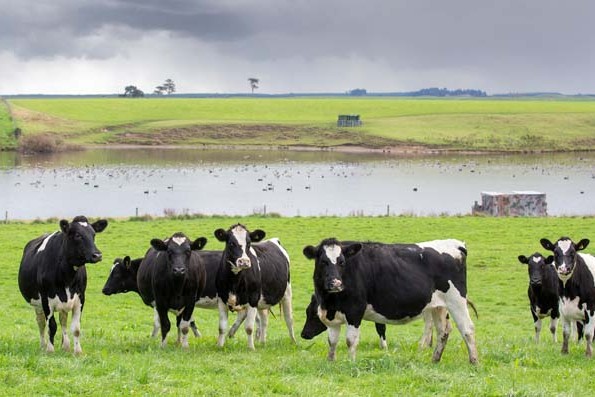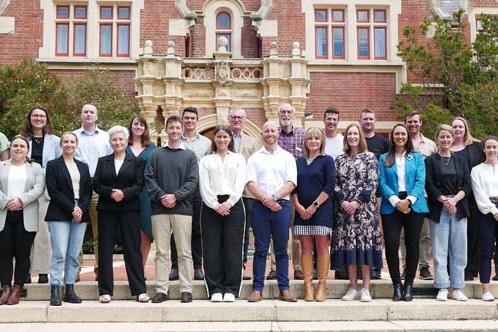Why are a highly indebted Waikato couple “excited” about paying down debt? Elaine Fisher has the answer.
Paying off debt may sound mundane and boring but for dairy farmers Karla and Gavin Coxon of Putaruru it is exciting.
“Normally you get excited about buying machinery, or maybe a runoff, but now we are focused on paying down debt which is exciting because by doing so we can increase the resilience of our business,” says Karla.
The couple, who were finalists in the 2020 Dairy Business of the Year awards, say the world economy and environmental legislation creates uncertainty around future dairy returns and land values.
Opening their business up to the scrutiny of the awards system revealed that while they were doing well in most aspects of their business, they were also among the most indebted per kilo of milksolids (MS) of the finalists.
“Reducing our debt and having a good cashflow will mean more tax and GST to pay but we do believe we have to get to a safe level of debt because there is a lot of uncertainty around future payouts and the volatile land prices. I feel our capital land values may be at risk.”
Gavin and Karla also have concerns that legislative changes may limit how much milk they can produce, impacting debt repayment. “It’s quite scary. We have been focused on increasing production and if we have to cut back intensity that will have an effect on how we run the farm and most certainly return on assets. I am not keen on going back into the cowshed,” says Karla.
Without taking on significant debt Gavin and Karla could not have bought the first 79ha of their current 157ha farm in 1998. To do so, they borrowed 100% of the price for the former rehab farm on Old Taupo Road. They describe it as an ideal first farm in need of care and attention from owner operators.
They brought with them the 230 strong herd Gavin had been sharemilking with, which included some of his father’s pedigree Holstein Friesian cows. “When Dad sold his herd they went for above average prices and I could only afford to buy two, but it was a start.”
Karla, who grew up on a farm at Eureka in the Waikato, began a horticultural apprenticeship with the Hamilton City Council soon after she left school working in the Hamilton Gardens, including three months in the office helping draw up landscape plans for the gardens, and time in the nursery.

“Now we have time and resources to put into planting out areas of the farm, Karla is in her element when it comes to plantings,” says Gavin.
Time and money was stretched in the early days of farm ownership. As well as bringing up a young family, Gavin and Karla ran the farm and carried out milking together in the 14-a-side double-up shed. “The kids came to the shed with us. I built them a play area, giving them a warm water bottle on frosty mornings, eventually putting a heater in the roof for them. They didn’t mind and all are still interested in the farm,” says Gavin.
“To be honest, while taking your children to the shed was quite common for our parents’ generation, 20 years ago I didn’t know many mums who were milking fulltime,” says Karla.
For the first year the family recorded a taxable income of around $14,000, causing the IRD staff to question how they survived. The answer was living frugally; meat from the farm and a great home vegetable garden.
“Even now family days, when we enjoy full home-grown food on our plates with vegetables from the garden and meat from the freezer, are proud times and our kids enjoy that too. In fact, all of them are interested in growing their own food,” says Karla.
Oldest son 23-year-old Ryan is a professional rugby union player for Tasman in the Mitre 10 Cup competition and for the Chiefs in Super Rugby. His position of choice is prop. Daughter Nicole (21) is currently studying adventure tourism management in Queenstown, and younger brother Hunter (16) at boarding school in Cambridge has plans to take up an electrical apprenticeship. Buying a neighbouring farm in 2009 allowed for increased herd numbers on the rolling to steep country Gavin says he wouldn’t swap for any other. The soil is free draining and fertile Mairoa and Tirau ash and the area fared better than many other parts of the Waikato during the 2020 summer drought.
“We fed out grass silage from March 1 but then some rain started around March 20, right in the middle of autumn calving. The pasture came right quickly and we had such a good autumn we produced 22% of our seasons production from March 1 to June 1st 2020, and that has kept going. Our production graph has recovered well,” says Gavin.
OLDER PASTURES PREFERRED
Gavin says it’s nine years since a paddock was resown. “We believe our older pastures don’t need to be resown or cultivated and we are happy with our pasture harvest figures. We have grown the odd maize crop in the past and used new pasture species then, but just prefer the older species.”
This season (2019/20), pasture eaten has risen half a tonne to 14 tonne, largely due to a good growing season. Higher grazing residuals left by winter milking cows, instead of very low residuals by dry cows, allowed pastures to recover quicker and caused much less pasture damage in the winter.
“There are no more than 100 dry cows on the farm through winter. Cows come home from the runoff two weeks before calving. Last spring we did not go under a 24 day round. Grass grows grass, and pushing that creates a surplus which is an integral part of our winter milk programme. We don’t use maize silage these days,” says Gavin.
Palm kernel is fed to the herd, and Gavin and Karla monitor amounts carefully to ensure they don’t exceed Fonterra’s limits.
GOING TO WINTER MILK
Winter milking wasn’t on Gavin’s agenda five years ago because he felt it would be detrimental to their business. “After one season of winter milking I said I wouldn’t continue unless I bought a runoff. And then three years ago I went and bought one. This offers us control of winter grazing and extra grass silage as required.
“The original plan was to graze 100 heifers and 50 beefies but our consultant Andrew Gould suggested using the runoff to support the home farm, grazing 100 heifers and lifting milk production by 40,000 milk solids.”
As Fonterra suppliers they earn a premium for their winter milk but Gavin says the biggest financial benefit is the days in milk for the herd.
“The lactation used to be 260-265 but now it’s 300 days. Heifers calve on June 20 instead of August 1. This means we can break in the heifers alongside the winter milk cows and give the heifers an extra six weeks between calving and their second mating.”
Around three quarters of the herd is now pedigree Holstein Friesian. “This is a totally commercial herd and the cows have to pull their weight, but I do enjoy looking at a well-bred animal,” says Gavin.
Gavin has more than an eye for a good cow. Some of his herd are part of the LIC-sponsored, Holstein Friesian Discovery Project, which is using advanced breeding technologies to develop top cow families and breed bulls for the AI industry.
After Gavin has selected the bulls to use for the season he provides LIC with a list of traits he considers important for the offspring including production, temperament and body conformation, and the computer system “custom mate” matches cows with bulls, also avoiding inbreeding.
“We pick which bulls will suit our cows, and with 300 to 400 cows to mate we usually have two choices on custom mate. I know the weight of the sire and if it’s too big for a particular cow, I’ll select another one. Temperament is important. In 15 years we have only had to cull one cow on temperament.”
Karla says she and Gavin would probably tolerate a “slightly stroppy” high producing cow in the herd, but they won’t put their staff in harm’s way with an unruly animal.
STAFF SET WORK ROSTERS
The couple value their staff highly; Cory who has been with them for 18 months, and Myles employed since July. Relief milker Shontelle frees Gavin or Cory up from the milking roster, allowing time for farm maintenance and runoff management.
Staff set their own work rosters, and enjoy winter milking. “We asked them how they wanted to be rostered and they came up with a system which gives them every third Monday and Tuesday off and every third weekend off. I’m part of the roster too and every week, Wednesday to Friday, the whole team is onfarm, which is a great time to get jobs done or sort out any issues,” says Gavin.
“We don’t skimp on the time off for staff and are always open to negotiation,” says Karla.
The dairy was upgraded in 2016 to a 44-a-side with cup removers. The shed works well now and easily handles 500 cows at the peak. Regular soil tests inform their fertiliser decisions, which are made in consultation with the Ballance rep and Andrew Gould. Sulphurgain or PhaSedN is spread in autumn and Pasturezeal G2 Balancer in spring. “I have bought a four-tonne spreader but mostly a contractor applies the fert. If we need to get it on but conditions are too wet, I don’t hesitate to bring in a helicopter.”
Now Gavin is not milking so often, he has time to consider other aspects of farm improvement, including retiring and planting out areas. “We have a lot of rhyolite rock, which can be good on races, but some of the outcrops are quite dangerous for staff and cows so we are retiring them and putting in native trees.”
Aesthetically it’s an attractive farm with a rolling to steep contour and, Karla says, is still after all these years a work in progress.
“This is our lifetime’s work and our aspirations are for it to carry on as a profitable business when we finally
step away so it can continue to look after our family, our staff and the service businesses we use. If we can achieve that, and step back from the day to day running of the business, it will be a very proud moment.”

FARM FACTS:
Owners: Gavin and Karla Coxon
Location: Putaruru
Area: 157ha – 147ha milking platform
Cows: 500 – 3/4 are pedigree Holstein Friesian
Effluent irrigation: 40ha
Supplement grown onfarm: 40ha grass pit silage
Supplement bought in: 40ha grass pit silage. Hay and balage as required, all from runoff, and meal is 724t meal blend purchased
Farm dairy: 44-aside herringbone with cup removers
DBOY 2019/20 KEY PERFORMANCE INDICATORS
Milk production: 453kg MS/cow, 1535kg MS/ha
Return on capital: 5.1%
Operating profit margin: 33%
Operating profit: $3,641/ha
Cost of production: $4.76/kg MS
Operating expenses: $2.37/kg MS
Pasture harvested: 13.1 DM/ha
Pasture % of feed: 70%
Labour efficiency cows/FTE: 114
Environment Score: 6.8/15
HR Score: 6/15
PRODUCTION STATS
- Production has increased by 88,000kg MS since 2003/04
- 2003/04 – first year of five years leasing second farm and production over both was 143,900kg MS
- 2010/11 season – meal feeder had been installed for 2 years and production was 168500kg MS feeding small amounts of meal
- 2013/14 season – biggest increase in production by 41,000kg MS owing to higher feed inputs
- 2019/20 season – continual increases to produce additional 23,500kg MS
- Seasonal total production increased by 20,000kg MS over the 3 years since winter milking started and purchase of runoff
- Aim now to achieve 250,000kg MS in one season.






